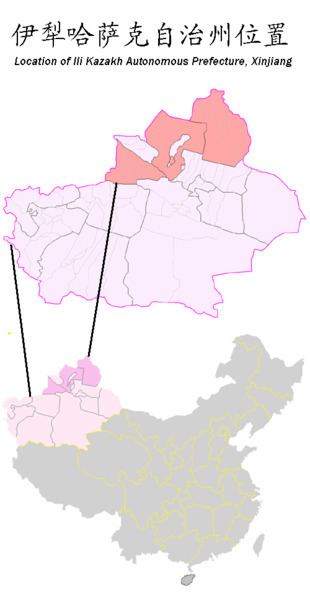Date February 3-5, 1997 Methods Protests, rioting | Result Protests suppressed | |
 | ||
Causes Execution of 30 Uyghur independence activistsCrackdown on Uyghur culture | ||
The Ghulja incident (Chinese: 伊宁事件; pinyin: Yīníng Shìjiàn, also referred to as the Ghulja Massacre) was the culmination of the Ghulja protests of 1997, a series of demonstrations in the city of Ghulja (known as Yining (伊宁) in Chinese) in the Xinjiang autonomous region of China (PRC) beginning in early February 1997.
The protests were sparked by the news of the execution of 30 Uyghur independence activists as well as the crackdown on attempts to revive elements of traditional Uyghur culture, including traditional gatherings known as meshrep. On 5 February 1997, after two days of protests during which the protesters had marched shouting "God is great" and "independence for Xinjiang", and had reportedly been dispersed using clubs, water cannon, and tear gas, the demonstrations were crushed by gunfire. Official reports put the death toll at 9, while dissident reports estimated the number killed at more than 100 and even as many as 167.
Aftermath
According to dissident sources, as many as 1,600 people were arrested on charges of intending to "split the motherland", conducting criminal activity, fundamental religious activity, and counter-revolutionary activities following the crackdown carried out in the years immediately following the incident in Xinjiang, overwhelmingly against Uyghurs. Rebiya Kadeer, who witnessed the Ghulja Incident, went on to become leader of the World Uyghur Congress.
